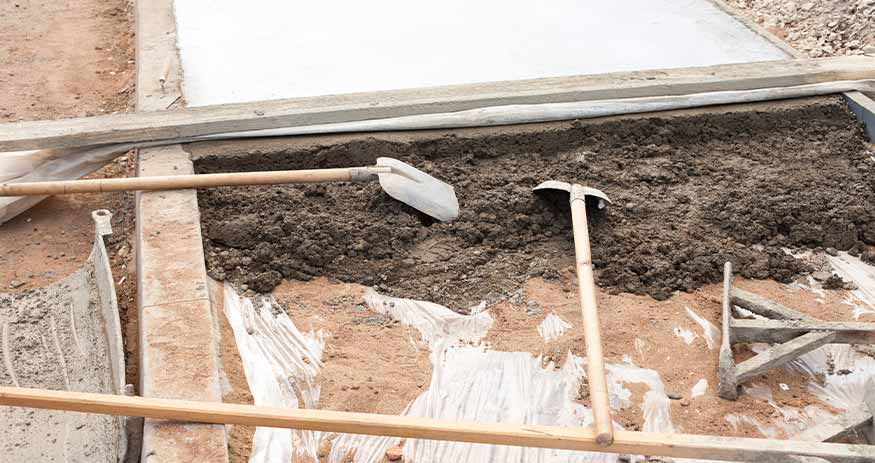
Having a basement has become essential nowadays. Many homeowners are weighing the benefits of finishing their basements to make extra space for their growing families. Besides the demand for basement lowering, the question raised is about the cost of underpinning the basement.
As the cost of real estate rises, homeowners can plan to expand their basements. Investing in the basement is better than selling the property or paying high prices to buy a property.
So, are you ready to invest in your basement? It is a good idea to make it a livable space to extend your living space.
But the question is, what if your basement is unfinished? It might need to be lowered to make a more convenient space. If compared to old homes, their basement was designed with low ceilings and exposed ductwork to reduce the headroom. It is also true that basement lowering is not an easy task; it requires proper time and resources.
Basement lowering, also known as underpinning, is the transformative process of excavating the basement floor to increase headroom and create truly usable living space. While the idea of gaining extra square footage and potentially a rental income suite is exciting, an important question naturally arises: how much does basement underpinning cost in Toronto?
It’s a question without a simple, one-size-fits-all answer. The basement underpinning cost Toronto homeowners face is influenced by a multitude of factors, making each project unique. However, understanding these variables is the first step towards budgeting for this significant home improvement. So, let’s understand.
Before going into the details of dollars and cents, it’s worth reiterating why homeowners in Toronto choose to undertake this substantial project. As our reference from Rock Bottom Underpinning highlights, many older Toronto homes were built with basements intended for utilities, not comfortable living. Low ceilings and obstructive ductwork are common complaints.
Underpinning offers a powerful solution, providing several key benefits:
As Rock Bottom Underpinning points out, there’s an alternative to full underpinning called “benching.” This method involves excavating downwards but leaving a concrete “bench” around the perimeter walls. While potentially less costly and faster, benching sacrifices valuable floor space.
For homeowners aiming for maximum usable space and the potential for a legal rental unit, underpinning is typically the preferred method. It involves excavating the entire basement floor to the desired depth and building new supporting footings beneath the existing foundation walls.
Now, let’s understand the key factors that will determine your basement underpinning cost in Toronto:
The Size of Your Basement: Naturally, a larger basement will require more excavation, concrete work, and labour, directly impacting the overall cost.
The Desired Lowering Depth: Lowering the floor by one foot will generally be less expensive than lowering it by two or more feet. The deeper the excavation, the more soil needs to be removed, and the more extensive the underpinning process becomes.
Soil Conditions: The type of soil surrounding your foundation can significantly affect the complexity and cost of the project. Sandy soil is generally easier to work with than clay or rocky soil, which may require specialized equipment and techniques.
Foundation Type and Condition: The existing foundation’s type (e.g., poured concrete, block) and its current condition will influence the underpinning approach and cost. Any necessary repairs to the existing foundation will add to the overall expense.
Complexity of the Project: Factors like the presence of load-bearing walls, the need to relocate plumbing or electrical systems, and the accessibility of the site can all increase the complexity and cost of the project.
Engineering and Permits: As highlighted by Rock Bottom Underpinning, obtaining engineer-stamped drawings and the necessary building permits is a crucial first step and a significant cost factor. These ensure the structural integrity and legality of the work. Expect to budget several thousand dollars for these essential services.
Excavation and Soil Removal: The process of excavating the basement floor and removing the excavated soil is a significant labour and equipment cost. The volume of soil to be removed will depend on the basement size and the lowering depth.
Underpinning Method: The specific underpinning technique used (often involving pouring concrete in stages, or “pins”) will influence labour and material costs.
Concrete Work: Pouring new footings and a new basement floor are substantial material and labour expenses. The thickness and finish of the concrete will also play a role.
Plumbing and Drainage: Installing new plumbing or relocating existing lines, as well as installing a proper interior drainage system (weeping tile) and potentially a sump pump and sewer ejector (if gravity drainage isn’t possible), are essential costs.
Finishing Costs (Optional but Common): While underpinning itself doesn’t include finishing, most homeowners undertake this project to create usable living space. Costs for framing, insulation, drywall, electrical, flooring, and fixtures will significantly add to the overall investment.
Contractor Fees: The reputation, experience, and overhead of your chosen contractor will influence their fees. Obtaining multiple quotes from reputable basement underpinning cost Toronto specialists is crucial.
Underpinning your basement is a significant investment, but the potential returns in terms of increased living space, enhanced property value, and potential rental income can be substantial. By understanding the factors influencing the basement underpinning cost in Toronto and taking the necessary steps to obtain accurate quotes, you can make informed decisions and embark on this transformative home improvement journey with confidence.